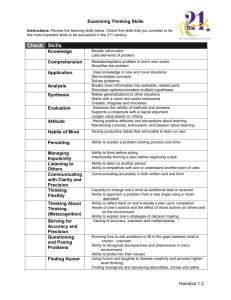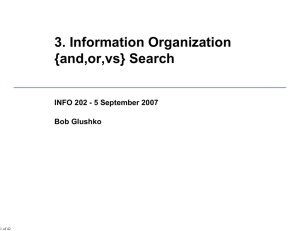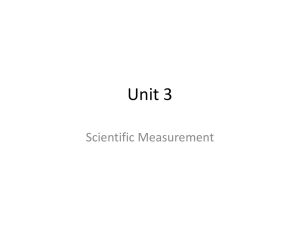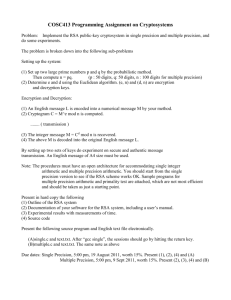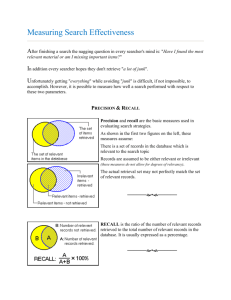Postings vector space
advertisement
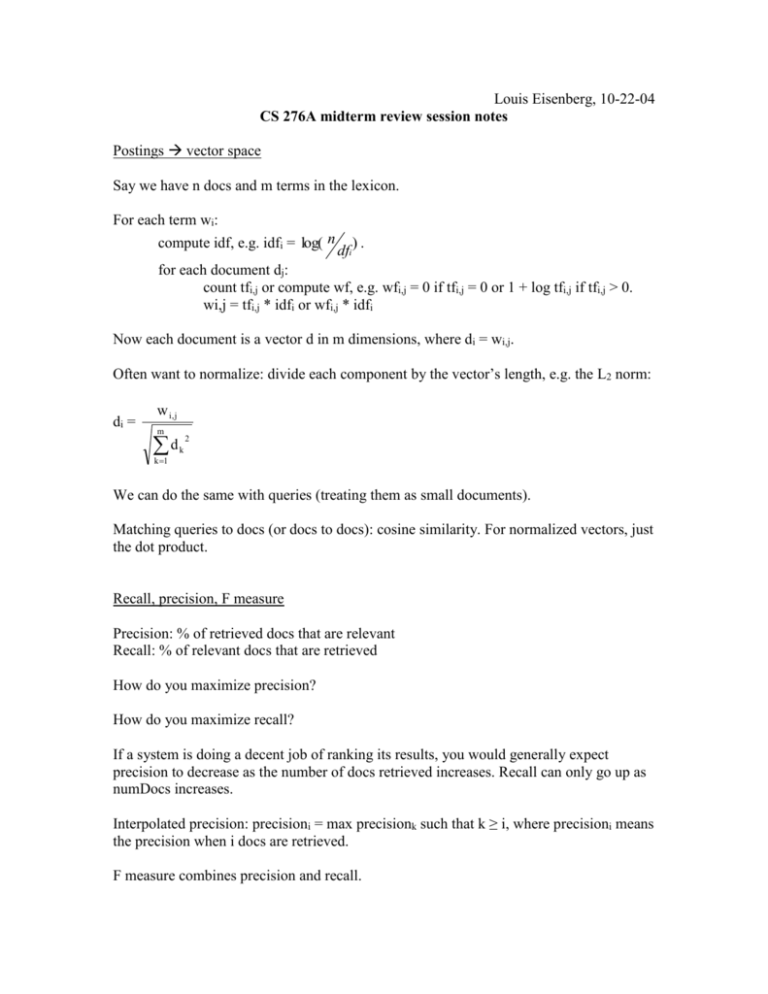
Louis Eisenberg, 10-22-04 CS 276A midterm review session notes Postings vector space Say we have n docs and m terms in the lexicon. For each term wi: compute idf, e.g. idfi = log( n dfi ). for each document dj: count tfi,j or compute wf, e.g. wfi,j = 0 if tfi,j = 0 or 1 + log tfi,j if tfi,j > 0. wi,j = tfi,j * idfi or wfi,j * idfi Now each document is a vector d in m dimensions, where di = wi,j. Often want to normalize: divide each component by the vector’s length, e.g. the L2 norm: di = w i, j m d k 1 2 k We can do the same with queries (treating them as small documents). Matching queries to docs (or docs to docs): cosine similarity. For normalized vectors, just the dot product. Recall, precision, F measure Precision: % of retrieved docs that are relevant Recall: % of relevant docs that are retrieved How do you maximize precision? How do you maximize recall? If a system is doing a decent job of ranking its results, you would generally expect precision to decrease as the number of docs retrieved increases. Recall can only go up as numDocs increases. Interpolated precision: precisioni = max precisionk such that k ≥ i, where precisioni means the precision when i docs are retrieved. F measure combines precision and recall. F= PR ( 2 1) PR . Balanced F is just F1 = . 2 PR PR So the numDocs for which you have peak F measure value probably represents a compromise between precision and recall – you increase numDocs to increase recall, but at the expense of precision. Random projection Reduce vector space from m dimensions down to k. Not choosing k terms randomly and eliminating all the other axes – rather, choosing k random directions (i.e. linear combinations of the m axes) that are all orthogonal to each other. kxm projection matrix R, mxn term-doc matrix A, random projection W = RxA. Other topics to think about - types of indices, their strengths and weaknesses, what they can and can’t do: basic inverted, n-word, n-gram, positional, permuterm - data structures for indices: trees (binary trees, B-trees) vs. hashtables - linear zone combinations - spell correction (edit distance, context-sensitive, n-grams, soundex…) - index mergesort - Zipf’s law and block estimates for postings lists - consequences of stemming – potential benefits and drawbacks



